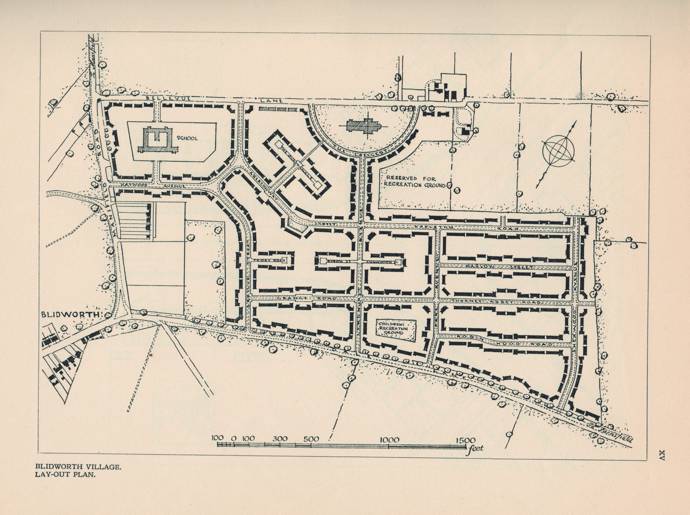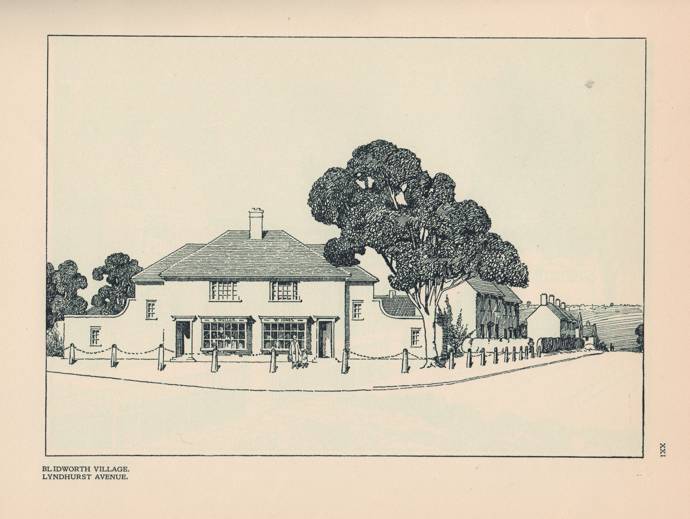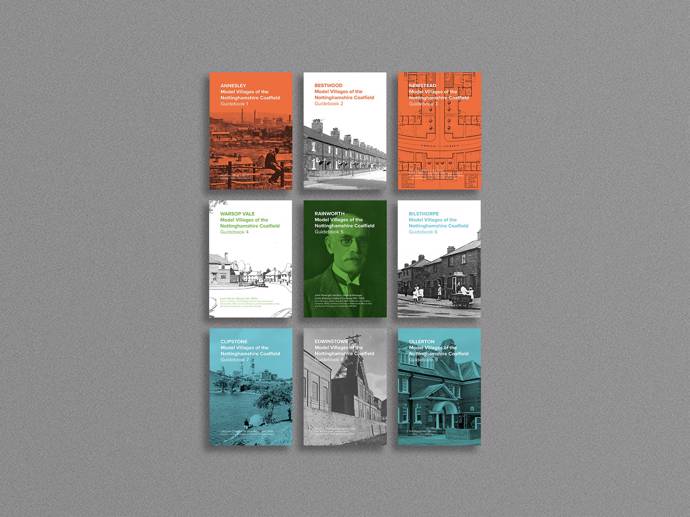![]()
Annesley Village c.1930s
From the 1870s to the mid 20th Century thousands of houses were built in model villages throughout the Sherwood Forest area to attract colliery workers and their families. They are an important legacy of the mining industry in Nottinghamshire. These developments transformed the then rural villages and large landed estates of the Dukeries, creating new, vibrant communities that flourished on the shared values of hard work, cultural celebration and sport.
The new villages were built on an ethos of paternal capitalism, which sought to control the colliery companies’ investment through paternalist means. This meant that colliery workers risked not only their jobs but also their homes if output was not up to the expectation of the colliery owners.
However, there remained plenty of positive incentives for those who were committed.
The new housing was good by the standards of the day following national trends in style, facilities and type. In Nottinghamshire even the early colliery villages of the Leen Valley, such as Newstead, were built mostly after the 1875 Public Health Act meaning they had individual privies, and a water supply was required.
Many, such as Blidworth, were built during the interwar years benefitting from the Tudor Walters Report which improved space standards whilst making bathrooms and flushing toilets essential. These houses also had the relative luxury of a living room, scullery and larder. The interwar developments also reflected elements of the ‘garden city’ building trend which provided garden space and wider streets.

Plan of the model village at Blidworth showing housing, a new school, church and recreational space
The colliery companies also held the virtue of ‘fellow feeling’ in high regard. This was reflected through pay, opportunities for promotion and social activity. The new villages were provided with and encouraged to have shops, village halls, welfare clubs, schools, cinemas churches and surgeries. Sports facilities played a key role in this with playing fields and other facilities being provided for and competitive sports teams being part of colliery village life.

Designs for shops to built in a prominent position in the new Blidworth village.
These model villages of the Nottinghamshire coalfield were researched as part of the Miner2Major Heritage Buildings Project, which formed part of a larger lottery-funded Landscape Partnership Scheme focused on the Sherwood Forest Area. The Project has published a free book The Model Villages of the Nottinghamshire Coalfield with accompanying guides, researched and written by Chris Matthews with Clare Hartwell. The heritage of these model villages reflect the evolution of mining in the region and the ambitions of the colliery companies who built them. The book is beautifully illustrated with old photos and original drawings. The accompanying guides have helpful maps and notes to help you to spot original features, details and the original arrangement of the streets and can be downloaded from the HER records below or from the miner2major website


Annesley Guide
Bestwood Guide
Bilsthorpe Guide
Edwinstowe Guide
New Clipstone
New Ollerton
Newstead
Rainworth
Warsop Vale
Hard copies are also available to loan from all of the Nottinghamshire libraries or collect you free copy to keep from larger libraries while stocks last. Free copies are also available from Five Leaves Bookshop in Nottingham and from Bilsthorpe Heritage Museum. The guides are available to download at miner2major.nottinghamshire.gov.uk.